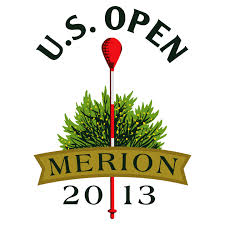The historic East Course at Merion Golf Club in Ardmore, PA hosted the 113th US Open Golf Championship over Father’s Day weekend, and for second year in a row I was fortunate enough to be live on location for another Major Championship. As I walked along in the galleries or sat in the grandstands I truly saw up close and firsthand what the players were up against.

113th U.S. OPEN – Merion Golf Club
Merion Golf Club has rich US OPEN history from previous Champions with the likes of Lee Trevino (1981), and Ben Hogan (1950) who hit the legendary “1 Iron shot” from the 18thfairway on the 72nd hole where a bronze plaque now marks where his famous shot was taken from. Merion Golf club is also famously recognized for its unique Red Wicker Basket flagsticks, it treacherous bunkers nicknamed the “white faces”, and the “gauntlet like” stretch of holes leading into the clubhouse.
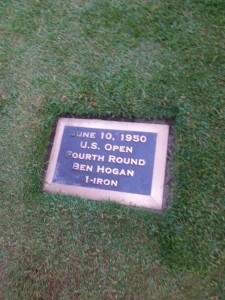
Bronze Plaque marking the spot where Ben Hogan shot his legendary 1 Iron on the 72nd hole in 1950
The US Open Golf Championship has always been highly regarded for its extreme level of difficulty delivering one of the toughest tests in golf. Narrow fairways, challenging greens, demanding pin placements, penalizing rough, long yardages, and extremely fast green speeds leave golfers with very little margin for error. Precision and accuracy on every shot are a prerequisite on a golf course where a par seems like a birdie and mistakes are compounded quickly resulting in scorecards filled with black numbers and squares instead of red numbers and circles.
Although Merion is considered a short golf course (under 7000 yards) by todays Championship standards, anyone who tuned into this past US Open quickly saw how challenging the golf course was from every angle. For the second straight year, the winning score was over par (+1 Justin Rose) with every golfer in the field including the likes of the Worlds top golfers Tiger Woods, Phil Mickelson and Rory McIlroy scoring over par.
As I observed the golf course from a turf management perspective, I couldn’t believe how perfectly dialed in every aspect of the golf course was from the creeping bentgrass greens, tees and fairways, to the white faced bunkers lined with knee high fine fescue growing along their edges, to the deepest, thickest Kentucky bluegrass and perennial ryegrass rough I have ever seen. Many years of planning and preparation made it possible to manage the turf across the golf course at the highest level so it hit its peak during the tournament.
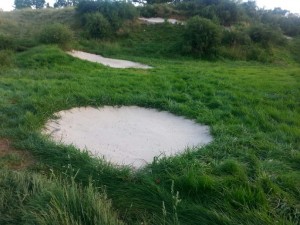
White Face bunkers surrounded by brutal rough in front of the 16th green
Managing the key cultural practices correctly played a major part in the golf course looking and playing the way it did. Core aeration, overseeding, topdressing, fertilization, pest management, irrigation, and mowing practices all contributed to the success of the turf management. For all the nay sayers, and people who doubted that the Merion would be too easy and short for the golfers and the technologies of today’s game….. I say wait a minute, not so fast!
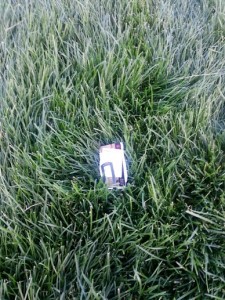
Money Clip buried in the Brutal Rough just a few yards from the fairway
In a very difficult, but yet fair challenge, Merion Golf Club stood her ground even when the weather wasn’t on her side. After the last shot was struck, and a champion was crowned the white faces of the bunkers were smiling and the blades of grass in the greens, tees, fairways and rough were still “green side up” adding another chapter to the rich history of Merion Golf Club.
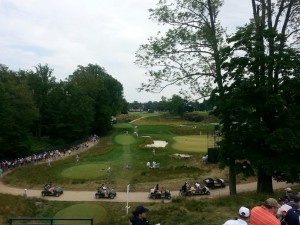
A view of the 521 Yard Par 4 18th hole from the grandstands. (Quarry Hole)
